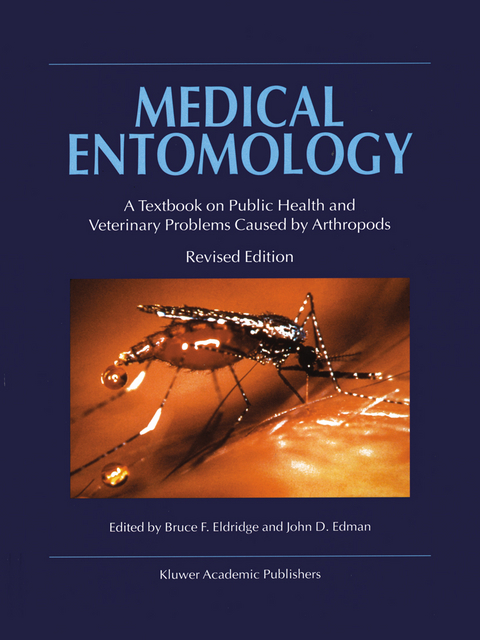
Medical Entomology
Springer-Verlag New York Inc.
978-1-4020-1794-0 (ISBN)
The subject of medical entomology contin- factors such as insecticide susceptibility, vec- ues to be of great importance. Arthropodborne tor competence, host preference and similar im- diseases such as malaria, yellow fever, dengue portant phenomena. Now, a variety of new and filariasis continue to cause considerable methods are available to study genes, and to human suffering and death. Problems in ani- genetically alter important characteristics in mal production, wildlife and pets of humans vectors as a potential means of controlling hu- caused by arthropods still exact a large eco- man and animal diseases. nomic toll. In the past 2 decades, the invasion Many of the traditional tasks of medical en- of exotic pests and pathogens has presented tomologists continue to be important. Arthro- new problems in several countries, including pod systematics is important because the need the USA. For example, the year 1999 saw the for accurate identification of arthropods is vital invasion of the eastern USA by Aedes japonicus, to an understanding of natural disease cycles. an Asian mosquito, and West Nile virus, a mos- Systematics has been made even more challeng- quito-transmitted African arbovirus related to ing because of the current appreciation of the St.
Louis encephalitis virus. number of groups of sibling species among vec- At the same time old and new health prob- tors of important disease pathogens. New mo- lems with arthropods occur, the traditional ap- lecular tools are assisting in separating these proaches to arthropod control have become forms.
1 Introduction to Medical Entomology.- 2 Introduction to Arthropods: Structure, Function and Development.- 3 Introduction to Arthropods: Systematics, Behavior and Ecology.- 4 Direct Injury: Phobias, Psychoses, Annoyance, Allergies, Toxins, Venoms and Myiasis.- 5 Arthropod Transmission of Vertebrate Parasites.- 6 The Epidemiology of Arthropodborne Diseases.- 7 Malaria, Babesiosis, Theileriosis and Related Diseases.- 8 Leishmaniasis and Trypanosomiasis.- 9 Filariasis.- 10 Bacterial and Rickettsial Diseases.- 11 Arbovirus Diseases.- 12 Mechanical Transmission of Disease Agents by Arthropods.- 13 Surveillance for Arthropodborne Diseases.- 14 Management of Arthropodborne Diseases by Vector Control.- 15 Prevention and Control of Arthropodborne Diseases.- Scientific Names Index.
| Erscheint lt. Verlag | 31.12.2003 |
|---|---|
| Zusatzinfo | 152 Illustrations, black and white; X, 659 p. 152 illus. |
| Verlagsort | New York, NY |
| Sprache | englisch |
| Maße | 195 x 260 mm |
| Themenwelt | Medizin / Pharmazie ► Medizinische Fachgebiete ► Mikrobiologie / Infektologie / Reisemedizin |
| Studium ► Querschnittsbereiche ► Infektiologie / Immunologie | |
| Naturwissenschaften ► Biologie ► Zoologie | |
| ISBN-10 | 1-4020-1794-4 / 1402017944 |
| ISBN-13 | 978-1-4020-1794-0 / 9781402017940 |
| Zustand | Neuware |
| Haben Sie eine Frage zum Produkt? |
aus dem Bereich


